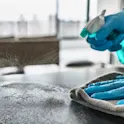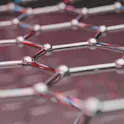
Featured news
26 May 2023
Termite mounds reveal secret to creating ‘living and breathing’ buildings that use less energy
By Mischa Dijkstra, Frontiers science writer Macrotermes termite mound in Namibia. Image credit: D. Andréen Scientists studied the ‘egress complex’ of Macrotermes michaelseni termites from Namibia, which appears to promote moisture regulation and gas exchange. They showed that the layout of this lattice-like network of tunnels can intercept wind around the termite mound to create turbulence inside, which can power ventilation and control the interior climate. These properties can be copied to create a comfortable climate in human buildings with little energy. Among the approximately 2,000 known species of termites, some are ecosystem engineers. The mounds built by some genera, for example Amitermes, Macrotermes, Nasutitermes, and Odontotermes, reach up to eight meters high, making them some of the world’s largest biological structures. Natural selection has been at work improving the ‘design’ of their mounds over tens of millions of years. What might human architects and engineers learn if they go to the termites and consider their ways? In a new study in Frontiers in Materials, researchers showed how termite mounds can teach us to create comfortable interior climates for our buildings that don’t have the carbon footprint of air conditioning. “Here we show that the ‘egress complex’, an intricate network […]












